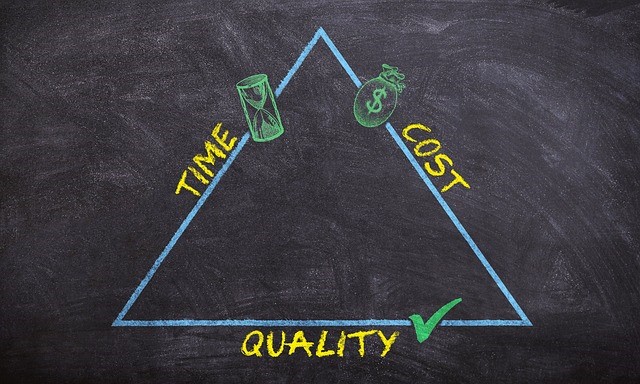Laurea’s bachelor of business administration students took up the role of producer on game development teams in the Capital Region Game Project in the fall of 2019. More familiarly CRGP is being implemented as a joint course with Metropolia, Haaga-Helia, Laurea, Stadin AO and Amiedu. Blog writers Annamaija, Heikki, Henni and Lauri share their experiences during the fall as producers in the game development teams.
Author: Henni
Before this project I didn’t really realize what a producer does or what does it take to work as a producer. Mainly producers work in an expert organization in creative fields. Producers role in developing a game is very broad including everything from communicating with stakeholders to marketing and product development. However the positive role of the producer is that concrete skill and a highly trained visual eye may not be needed. Sure it helps, but it requires no more than a basic understanding of the steps involved in making a game. Project management and the ways to do it are necessary to understand and handle (1).
All about the people
Especially in this kind of a student project the role of a producer is largely communicating with people, sparring and bringing together different skills and expertise. The end result is a game demo and a theoretical base of how the game would function in the “real” world if it would be taken beyond the demo.

The producer is in the role of a leader in the team. But despite the title of a leader he or she should not behave the way a normal leader is seen to behave. No one is higher than the other in the team and the producer must also prepare for this with his or her own leadership. A good producer gives team members a goal and encourages them as individuals toward that goal, supporting them along the way. The producer should face each team member as an individual, strive to give them their or space to work but also keep the goal in everyone’s mind (1).
The producer’s role involves a variety of bureaucratic and administrative measures. In larger projects or companies these are often the responsibility of the Administrative Manager or Production Manager, but in our small-scale project the producer has the main responsibility.
It is always the producer’s role to stay on budget and to be able to know every part of the budget:
- What does it consist of and what direction does the snowball effect spin if any part of the budget is exceeded?
- What can be accomplished within the projects time schedule and will it be reflected in the budget if the project doesn’t keep up with the schedule?
- Is there a danger of quality loss if the time schedule is too tight? (1)
As a game producer in this student project, budget tracking was mainly about resource management with the time available as resources and the areas of expertise of team members.
Branding
In addition to taking care of the team and their progress the producer needs to think about the games brand and product development. In our CRGP project, thinking about earning patterns, target audience and game branding was more brainstorming and imagining, because at no point was the demo going to be produced any further. However, in real life the game brand and the game as a product should be thought carefully before you can even imagine it getting any funding. Branding also plays a big role in marketing (1).
We think about branding the game from the perspective of who is going to play the game and what is the identity of the game:
- Is it a care-free platform game, a fighting game that requires concentration or maybe a strategic survival game?
- Who are these future game players, are they children or adult, active game players or those who mainly will use the game to kill time?
- What platform is the game released on
Our game teams had different plans on what platform the games are made on. Some from the outset had a clear plan for VR world, while others would change the game platform many times during game development. In our game the game was made on such a lightweight base that it would be easy to transfer to different platforms.
Who’s going to play the game?
So what about the marketing, to whom will it be sold? There are three things to consider:
- The platform of the game
- Countries where the game will be marketed
- Genre of the game
Countries can be thought geographically. Do you stay in Europe, maybe switch to a much-gamed Asian markets or go to America? (2) Each country has its own gaming market and culture but mainly the gaming industry is very international.
Do money trees exist?
To some of the project teams had an idea from the start to do the game beyond the demo phase. But mostly we playfully threw ideas on how to make demo games ultimately money generating in the end. However, the challenge came with various licensing issues which then removed the motivation to think about games funding. License problems meant that the games should have been made from scratch with paid software versions. Knowledge of the license with each software should be taught in schools to prevent students from getting into trouble with publishing. Many gaming teams were surprised at how strict you have to be with licenses and that software and materials made with student versions cannot be published in any commercial sense.

The producer should think about the game’s logic of earning. How to collect money from players in short and long term? There are many ways to do this in the gaming industry and hybrids have also been made from different means, combining different earning models. Other games benefit from view-to-play earning means where sponsorships must be acquired. Some games work best for free but you have to pay extra to get add-ins or more features. For other games it is smarter to set some kind of download fee. Before choosing a monetization model the producer must be familiar with:
- Competition
- Competitors
- The behavior of the target group
- How game markets are working now and in future (2).
Indeed last years producers talked about earning models in more detail in this blog (in Finnish).
How did it feel to be a producer?
In our project we were in the role of a producer in the game development teams, which meant different thing to each team member. Some quenched fires with continuous feeds among game team members, others focused on sparring and the other was left with the responsibility of thinking about the game’s bureaucratic issues and marketing. Our goal was to learn the steps needed to develop a game, assemble games identity and to work with a creative team. I feel that this project has opened my eyes to how different people can be and how important open, but thoughtful communication is. It was also interesting to think about marketing, business plan and brand development.
Sources (in Finnish)
- Saksala, E. 2015. Tuottajan käsikirja. Helsinki: Like Kustannus Oy
- Määttä, M. & Nuottila, E. 2016. Opas peliliiketoimintaan.
